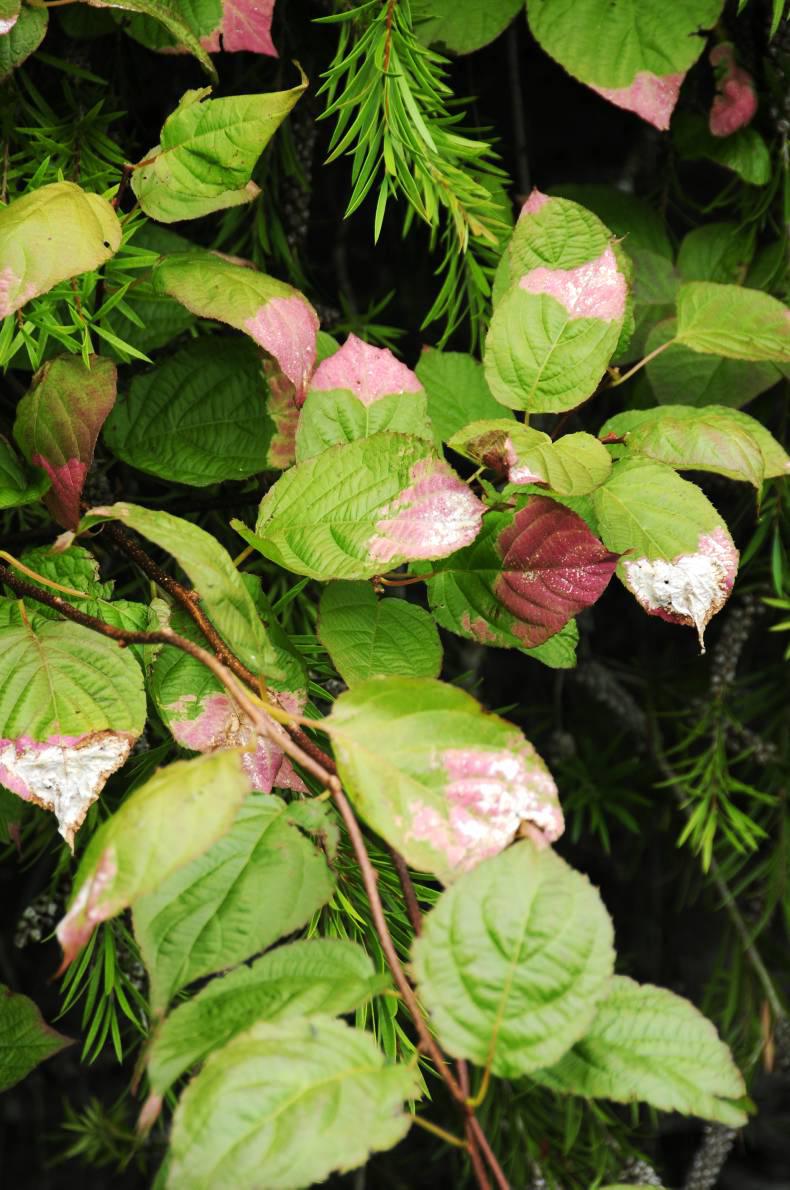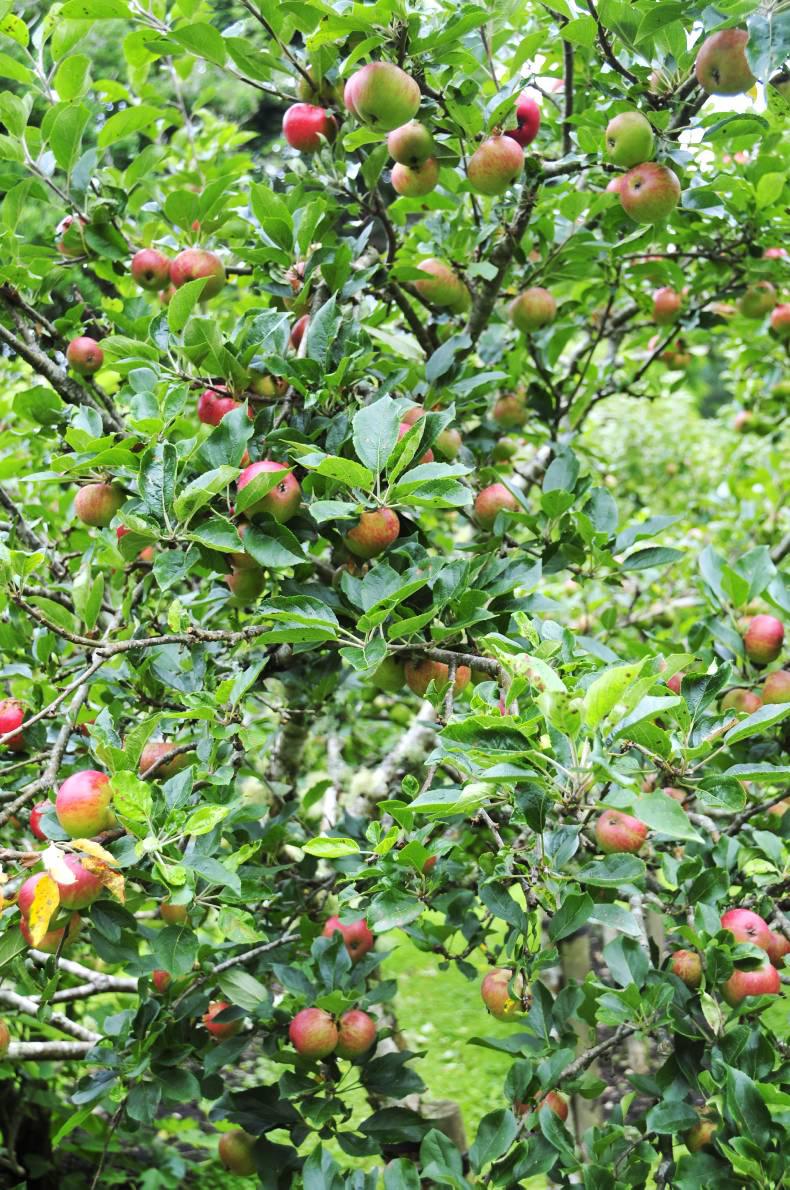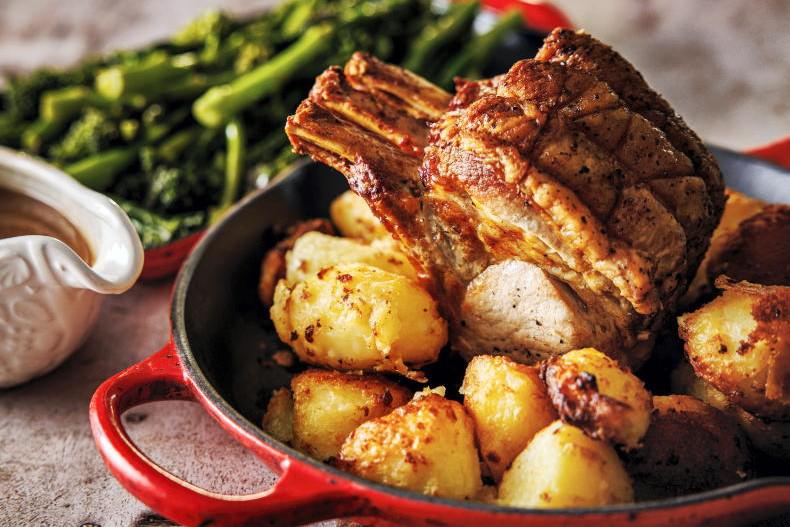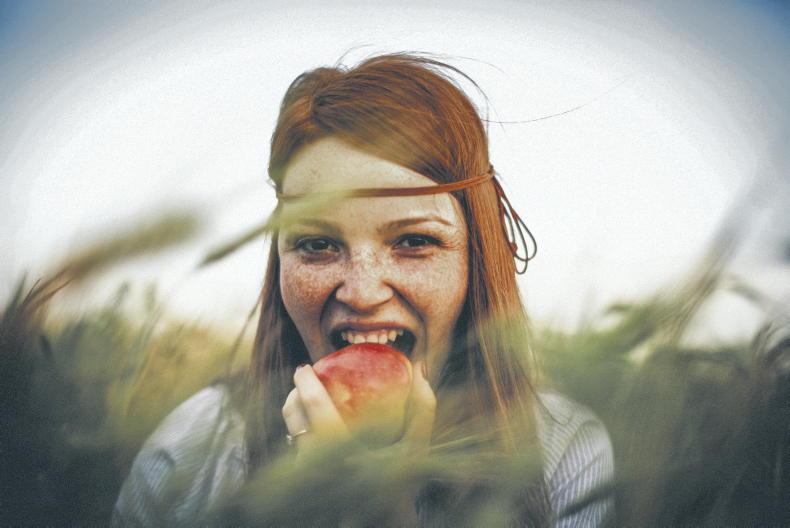The kolomikta vine is unmistakable with its distinctive leaf colouring. The new leaves open tinged with a purplish-bronze colour and then turn green – some of them developing pink tips, the colouring taking about one-third of the leaf. Some of the leaves may bleach out to white, especially if there is strong sunshine. But too much shade tends to reduce colouring and the ideal is a few hours of sunlight a day, preferably towards the late afternoon.
The kolomikta vine is a true climber on any kind of woody support, but better in gardens on a trellis as it is not a strongly competitive plant. It can grow up to 5m, but usually reaches half that because it finds the summer weather a bit cool here.
The botanical name is Actinidia kolomikta and it gets its name from the kolomikta area of the Amur valley in Manchuria. This area is very cold in winter and the vine is hardy, but it enjoys hot summers.
Although it is not very widely grown, it is available occasionally in garden centres. It is not a big seller because the plants usually look a bit tired from being potted too long, but it is worth trying if there is a wall trellis space that gets a few hours of sun at some stage.
The kolomikta vine is a close relative of the kiwi fruit, which everybody knows as a sweet fruit with green flesh and a hairy, brown skin.
This plant was long called the Chinese gooseberry, before it was renamed the kiwi fruit by New Zealand growers and marketed as such worldwide. The older name was given because the shape of the fruit and its hairy exterior was reminiscent of a gooseberry.
The plant’s origin is in China and its botanical name is Actinidia delicosa, formerly Actinidia chinensis. Originally, it had no connection with New Zealand. Just like the kolomikta vine, the Chinese gooseberry is hardy, unless the summer is very cold and the new shoots do not ripen fully.
Chinese gooseberry fruit can be achieved occasionally in Ireland in a warm summer. Ideally, they need full sunshine and the extra warmth of a wall, but can be grown in a greenhouse or a large tunnel if kept tidy.
The plant is capable of many vigorous shoots of 2m in a single summer. It can be pruned to keep it to size and the shoots shortened back to provide flowering shoots the following summer. It behaves very like a grape vine outdoors, growing well, but rarely fruiting. In fact, the kiwi fruit is more reliable. Sometimes the fruit is small, but softens off the vine when picked.
Usually, the plants are male and female, and both are needed, but some new varieties are self-fertile, producing flowers of both types, such as Issai and Blake. It can be hard to find kiwi fruit plants, but some garden centres stock them in spring. You can also try raising plants from seeds taken from a ripe fruit. Fruits are often picked immature for transport and the seeds might not be fully ready, but it is worth a try. Even if you never get fruit, the kiwi fruit vine is decorative. It can grow up a big tree and create a sheet of large heart-shaped leaves that colour in autumn. In a big garden, with lots of wall space and wire supports, the red, hairy new stems are quite dramatic and the foliage is attractive.
Apples running late this season
Apples, plums and pears are about two weeks late this year as the low temperatures of spring and summer have delayed ripening. The variety Discovery is normally, in an average year, ready on 19 or 20 of August, but it is nowhere near ripe this year. Perhaps two weeks of warmth will be needed.
Plums were also delayed well into August and pears are smaller than they should be at this time of year.
All kinds of fruit need a reasonable amount of summer sunshine. The danger is that if they get too delayed and do not get a good finishing spell, the flavour and sweetness does not develop fully and the fruit can be insipid to taste and not store well, tending to shrivel.
Flowers
Bedding and container annuals will last longer if given some liquid feed now – they still have at least eight or so weeks of flowering, but will stop long before that without feeding and regular watering. Spring bulbs are already in the shops and it is good to plant them early.
Fruit, veg & herbs
This summer, weed control in vegetables has been a challenge with a lot of showery weather. The vegetable garden has gone past its summer peak, with early cabbage, cauliflower, carrots, French beans, broccoli and peas finished.
Trees, shrubs AND roses
Climbing and rambling roses finished flowering can be pruned and tied in while they are still manageable. Preparations for autumn and winter planting can be made now – remove existing weeds or apply glyphosate-based weedkiller to leave a clean slate to start.
Lawn
Grass has been growing strongly after a cold, slow start, boosted by heavy rain, but some soils have lost nutrients through leaching and this shows up as pale grass. Apply autumn lawn low-nitrogen fertiliser if the grass is a bit yellow or weak and keep mowing regularly. Apply moss control.
Greenhouse plants
Stop feeding most greenhouse plants now because they will have enough in the pot to keep them going and reduce watering gradually to toughen plants before winter. Pick greenhouse tomatoes, peppers and cucumbers as soon as they are ready.










SHARING OPTIONS